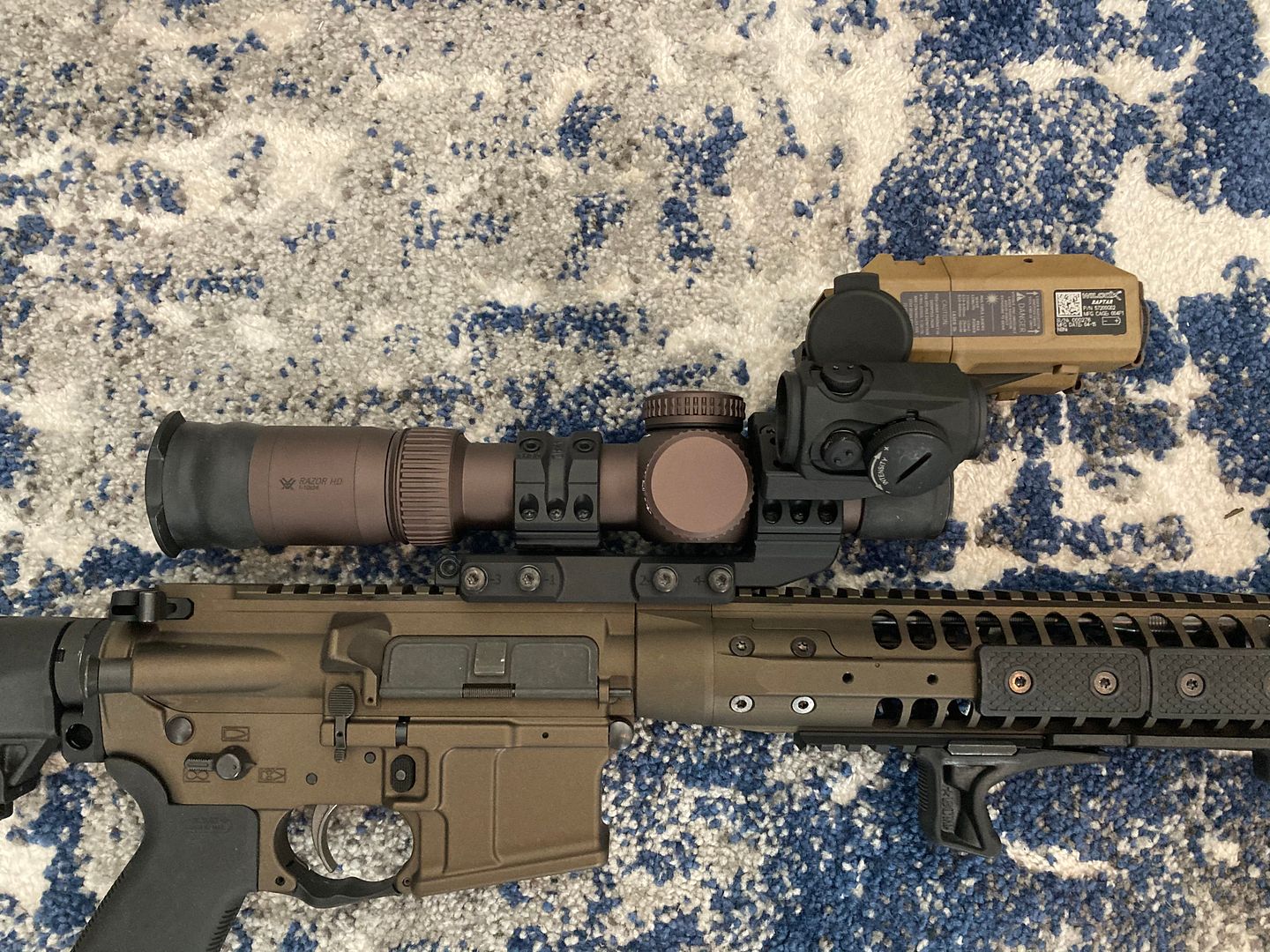I have a new build finishing up. A 14.5 midlength built on a Radian ADAC lower, San Tan upper, Lancer carbon fiber handguard, and Vltor A5 system. Pic for attention:

I’m wanting to run a LPVO and 45* offset RMR on this setup. So far the rifle is pretty dam light weight.
my buddy has a Khales LPVO on his rig and while very nice it’s out of my price range. So I’m looking at the following:
NF NX8 with the tight eyebox issue
Vortex Razor 1-10
and Primary Arms Platinum 1-8 ACSS Raptor
I’m really digging everything about this Primary Arms optic except it’s heavy as fuck. Does anyone have hands on experience with this optics I’m looking at?
I’m wanting to run a LPVO and 45* offset RMR on this setup. So far the rifle is pretty dam light weight.
my buddy has a Khales LPVO on his rig and while very nice it’s out of my price range. So I’m looking at the following:
NF NX8 with the tight eyebox issue
Vortex Razor 1-10
and Primary Arms Platinum 1-8 ACSS Raptor
I’m really digging everything about this Primary Arms optic except it’s heavy as fuck. Does anyone have hands on experience with this optics I’m looking at?






